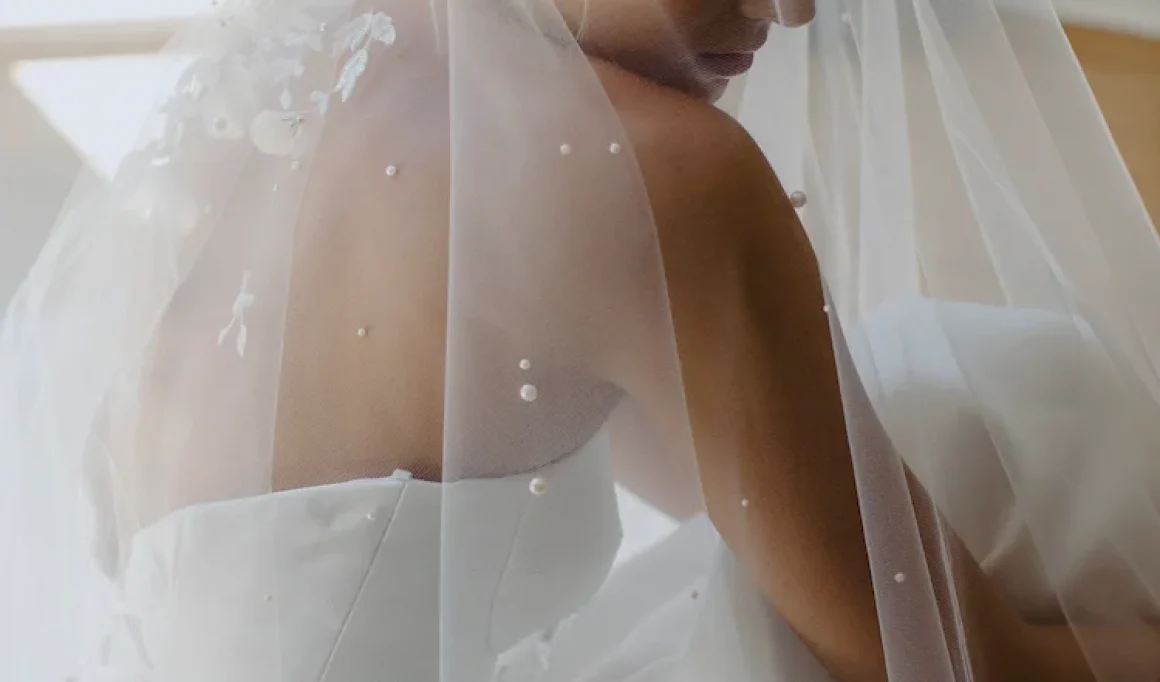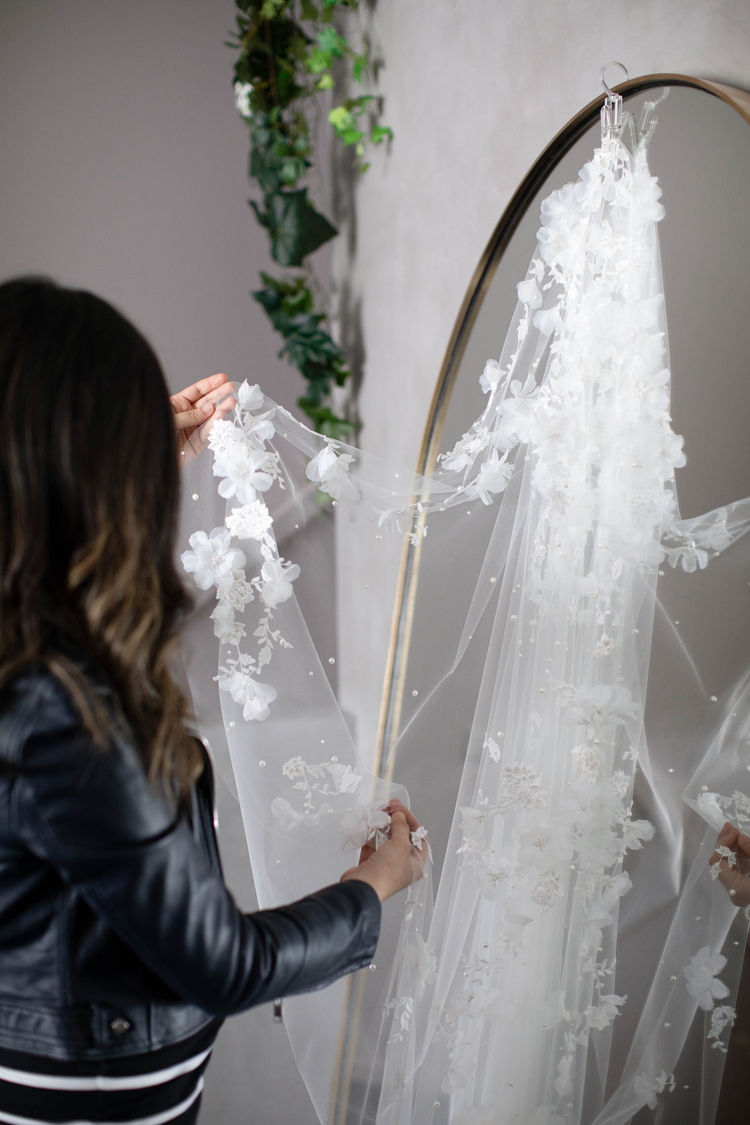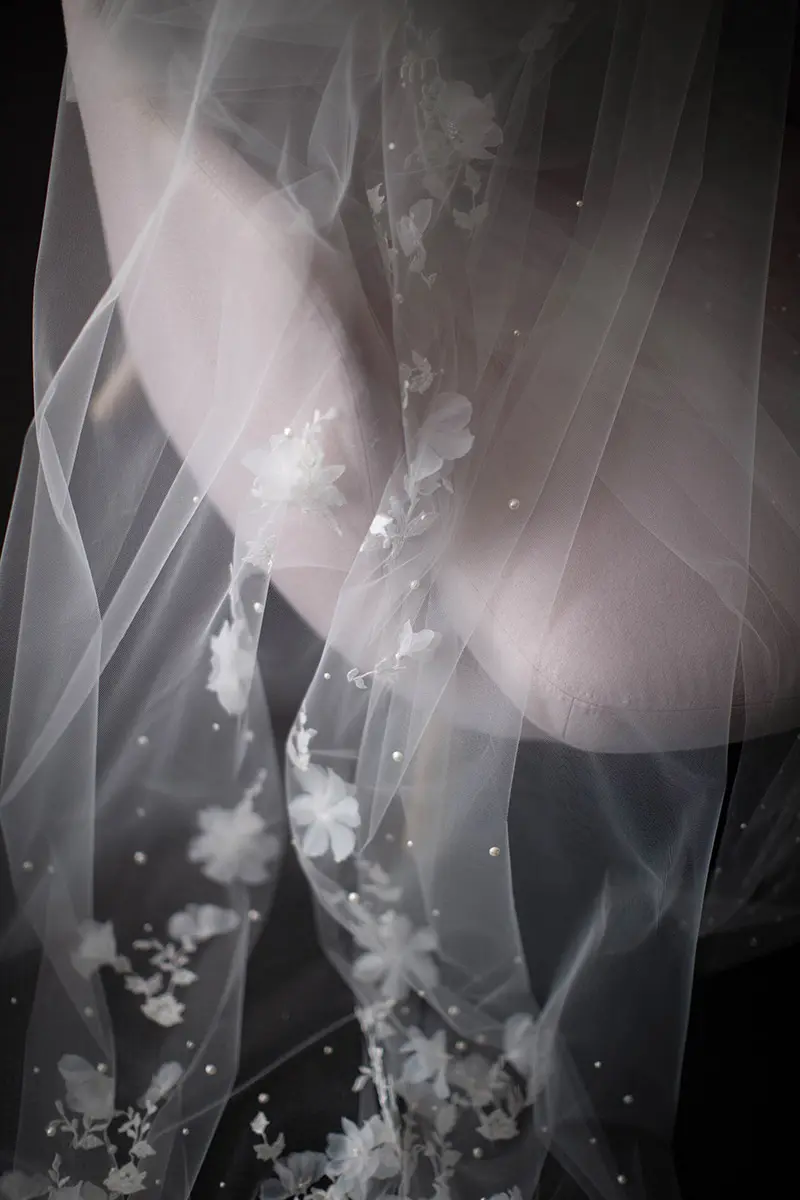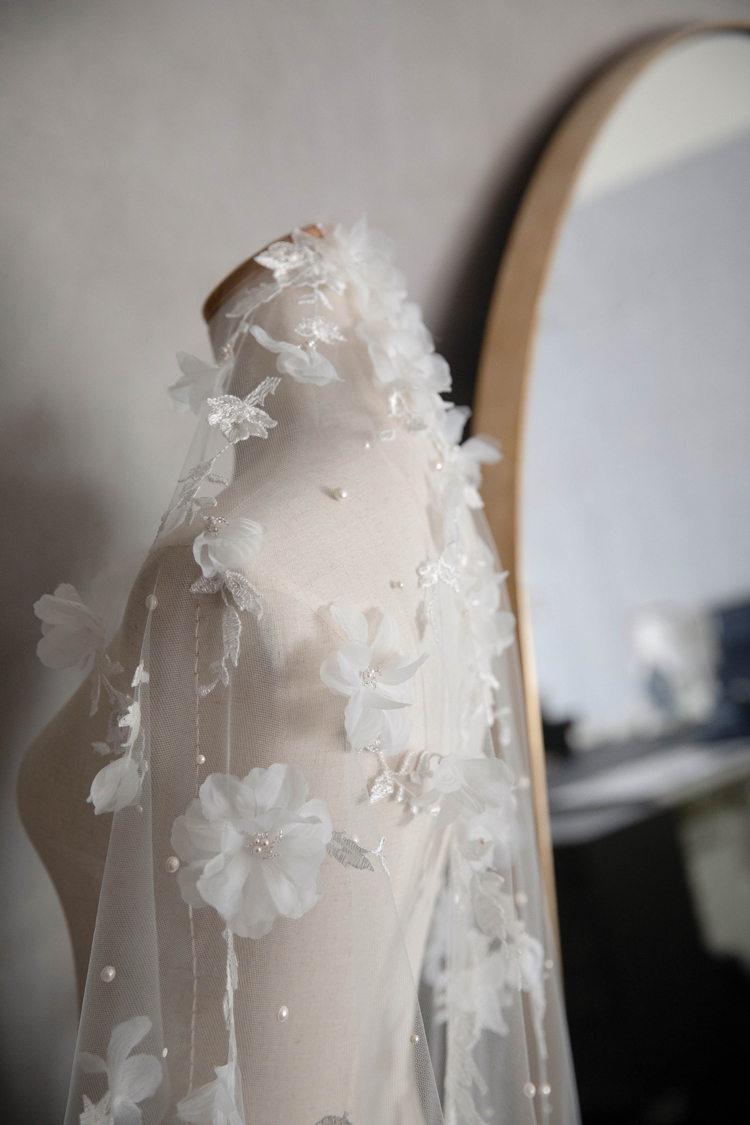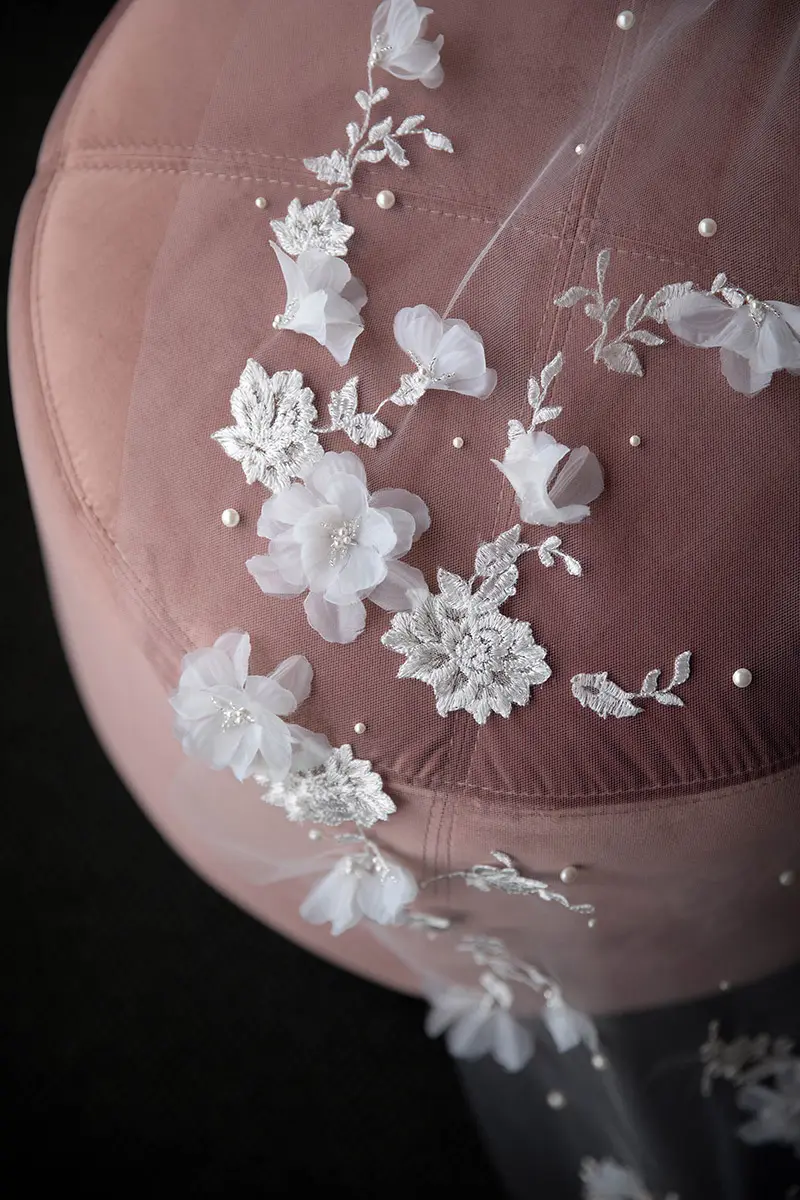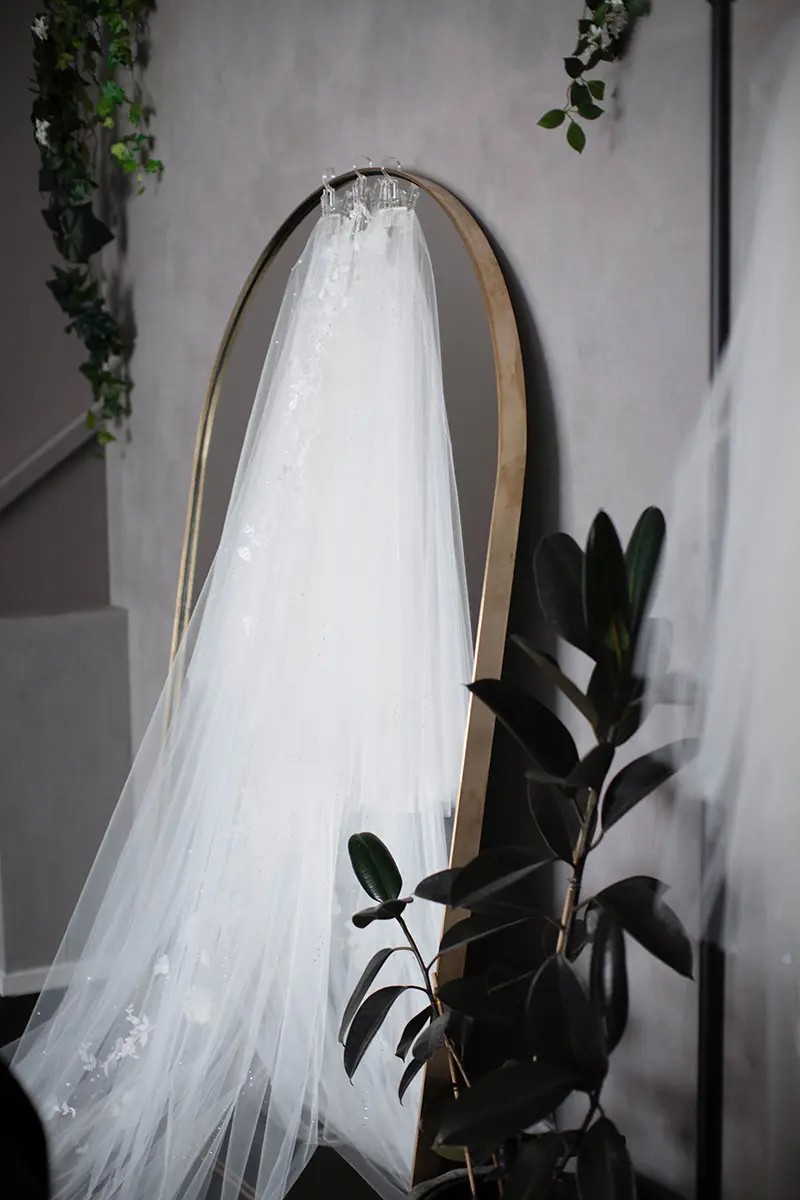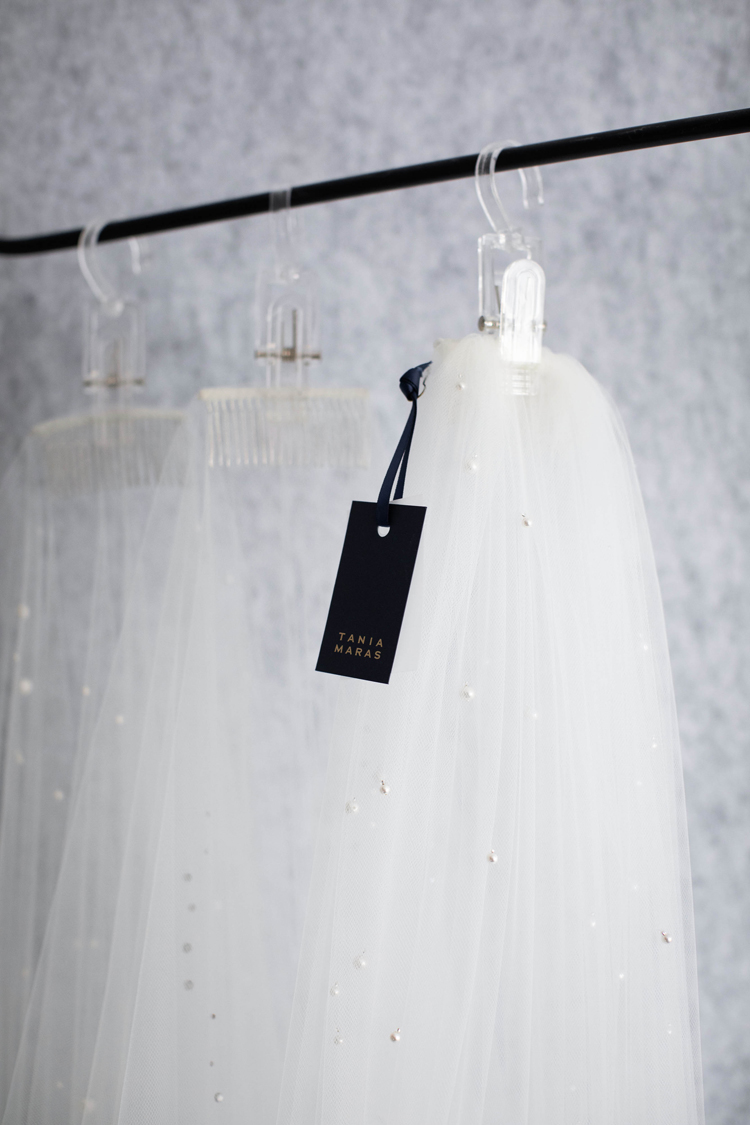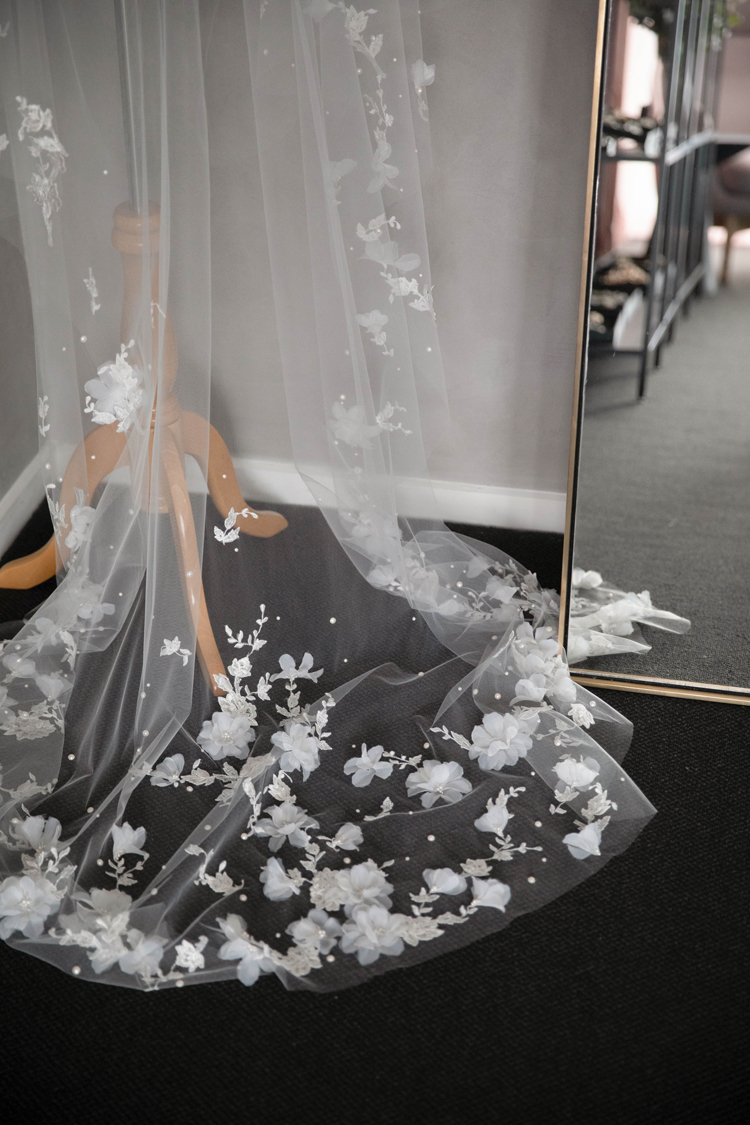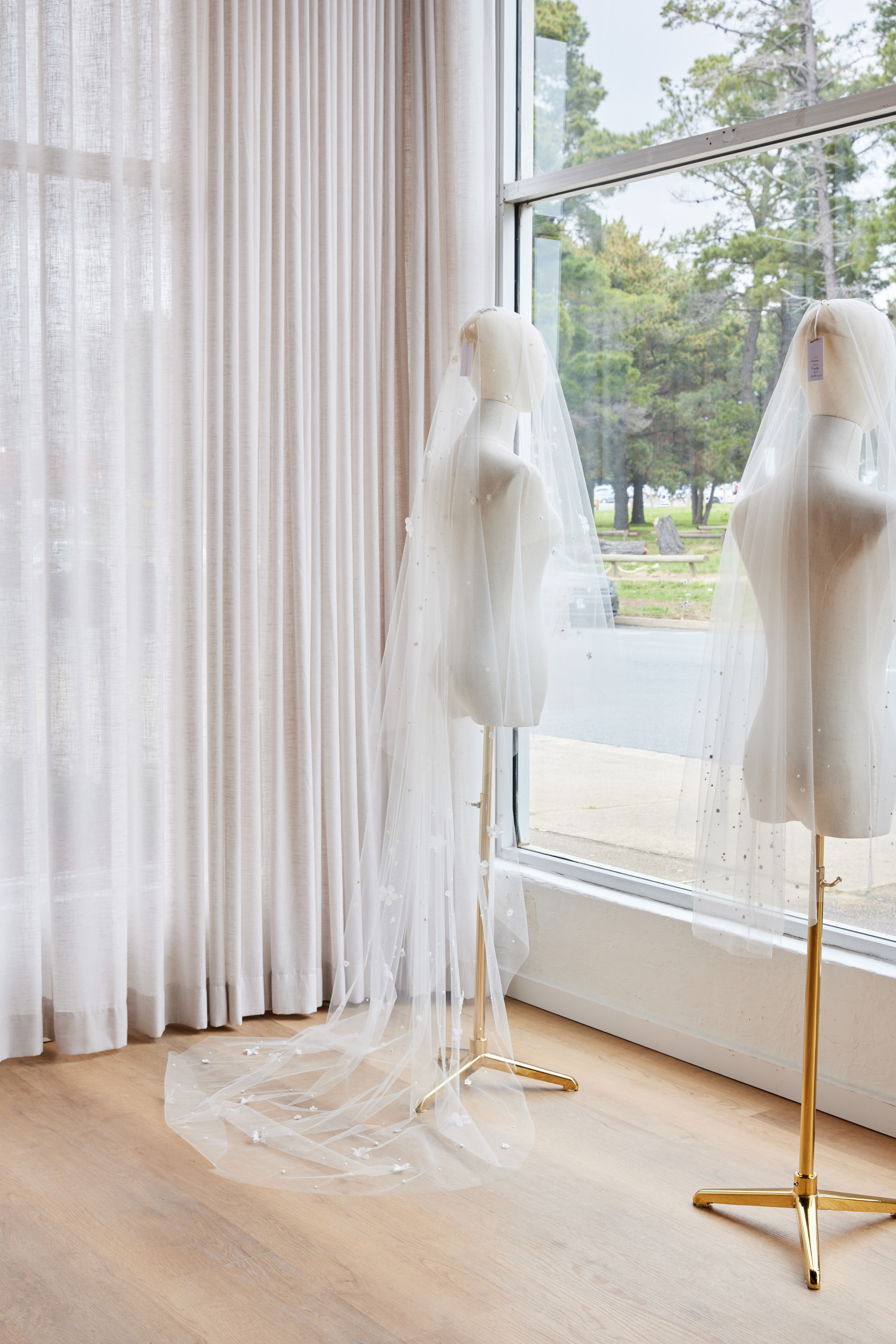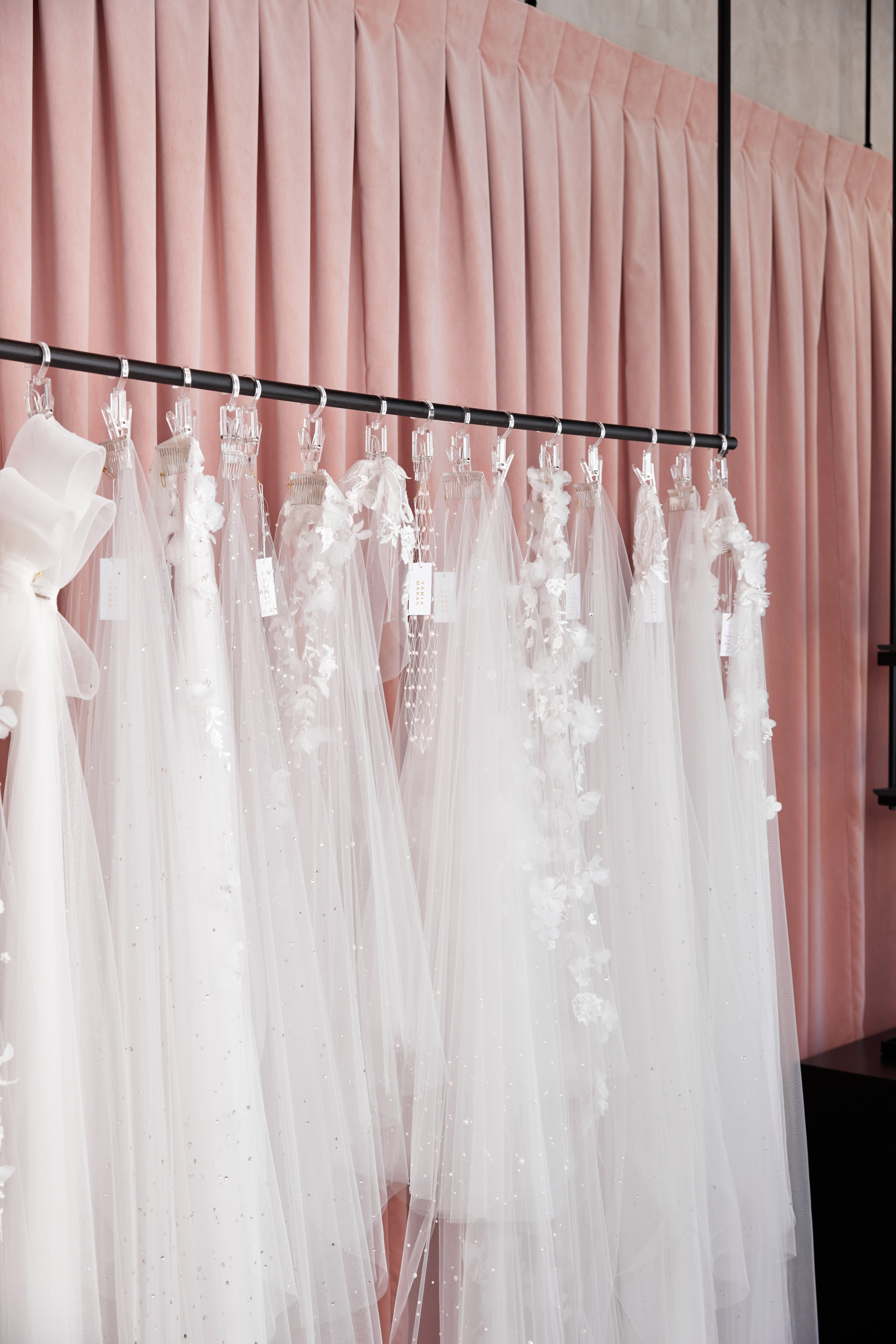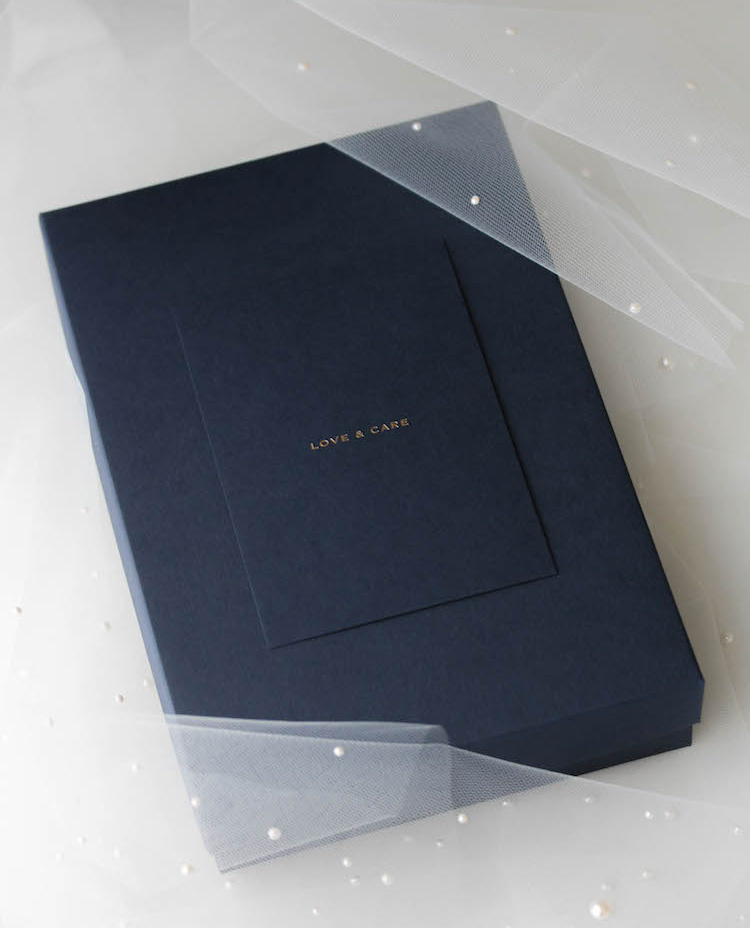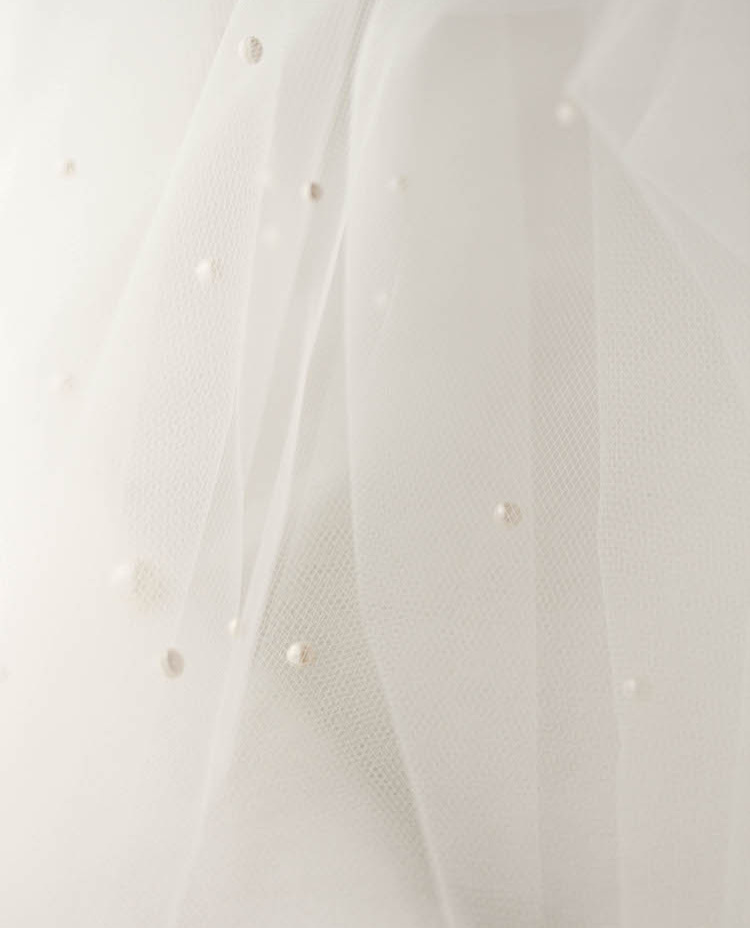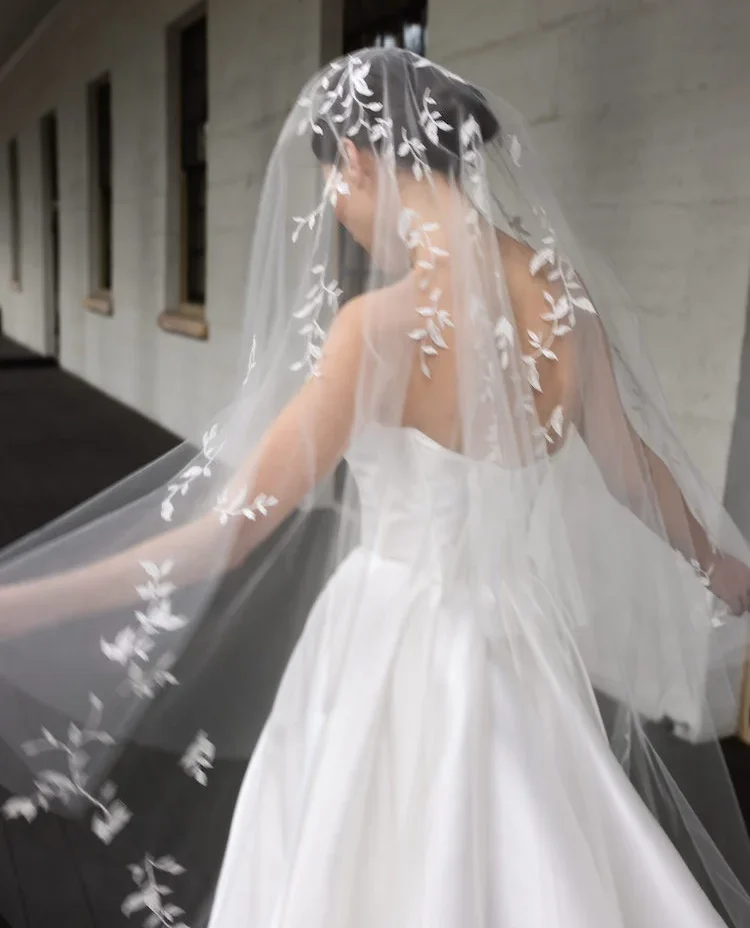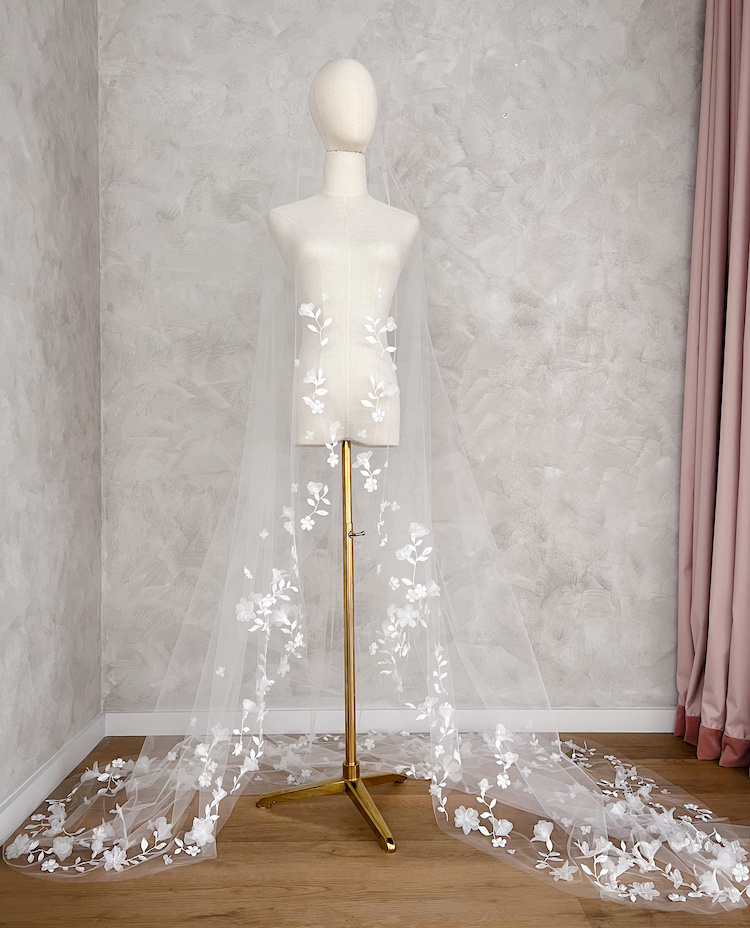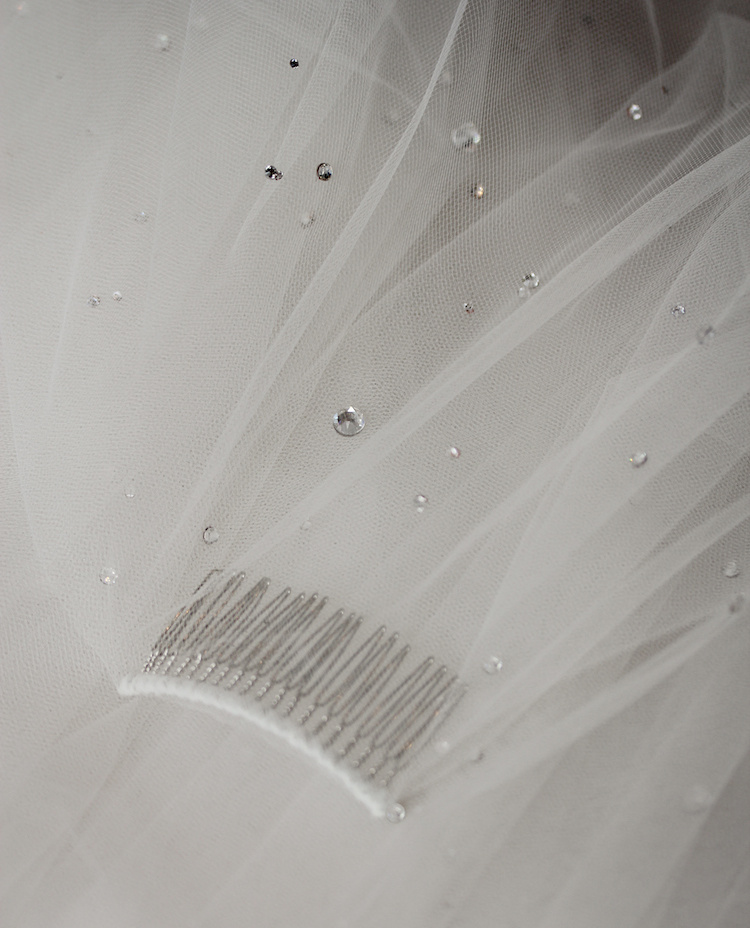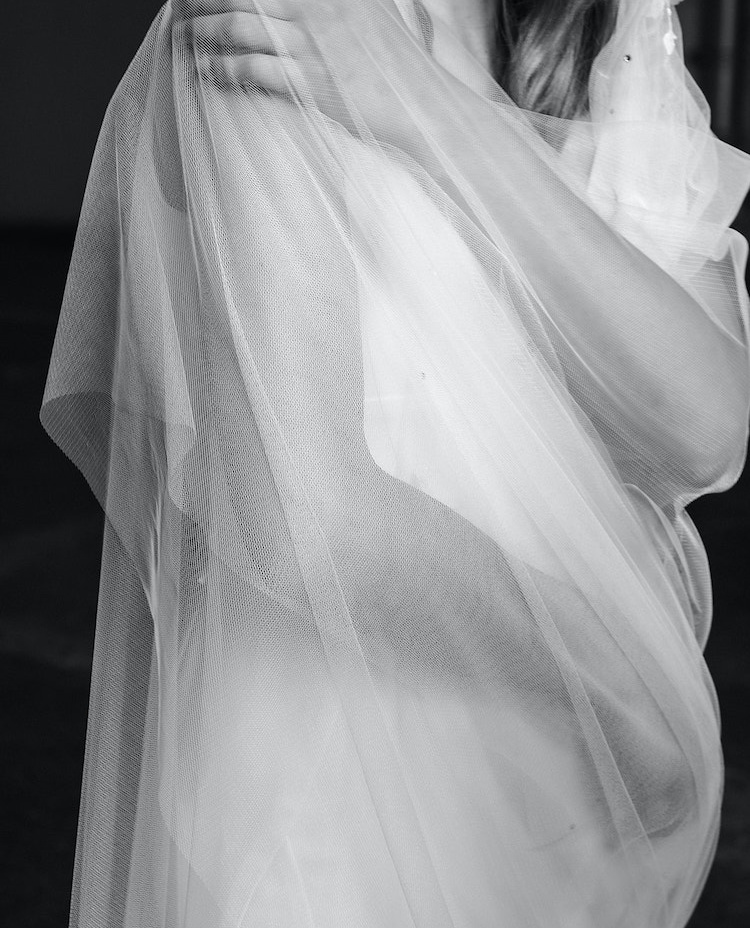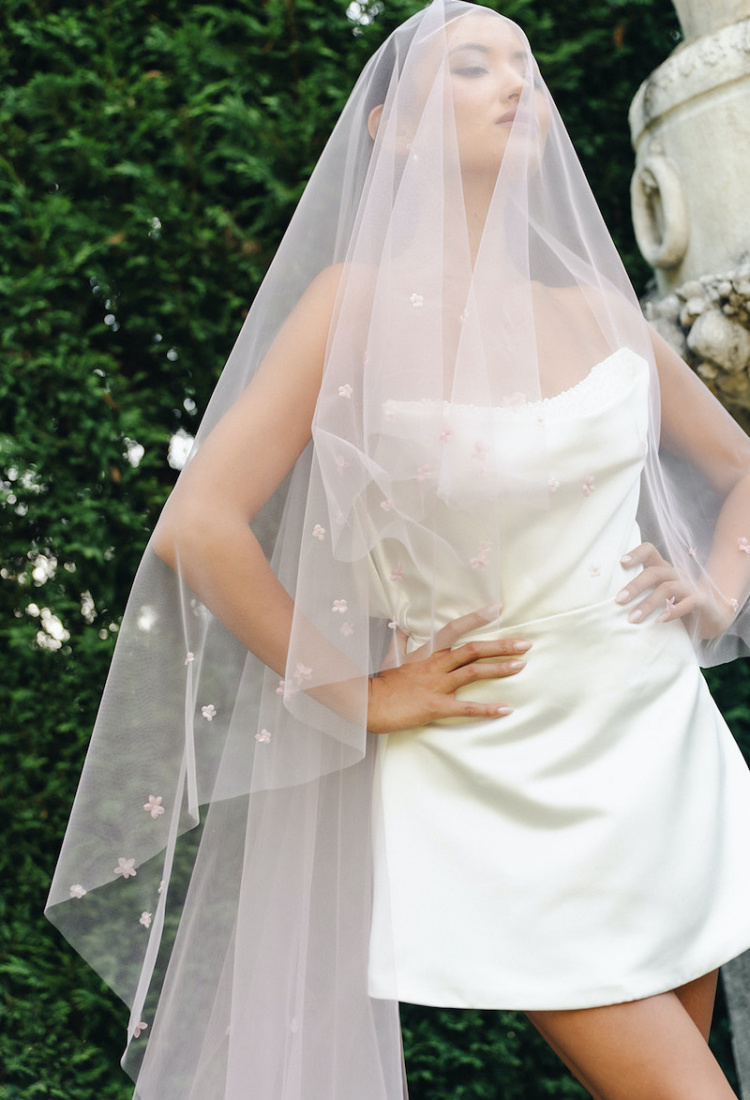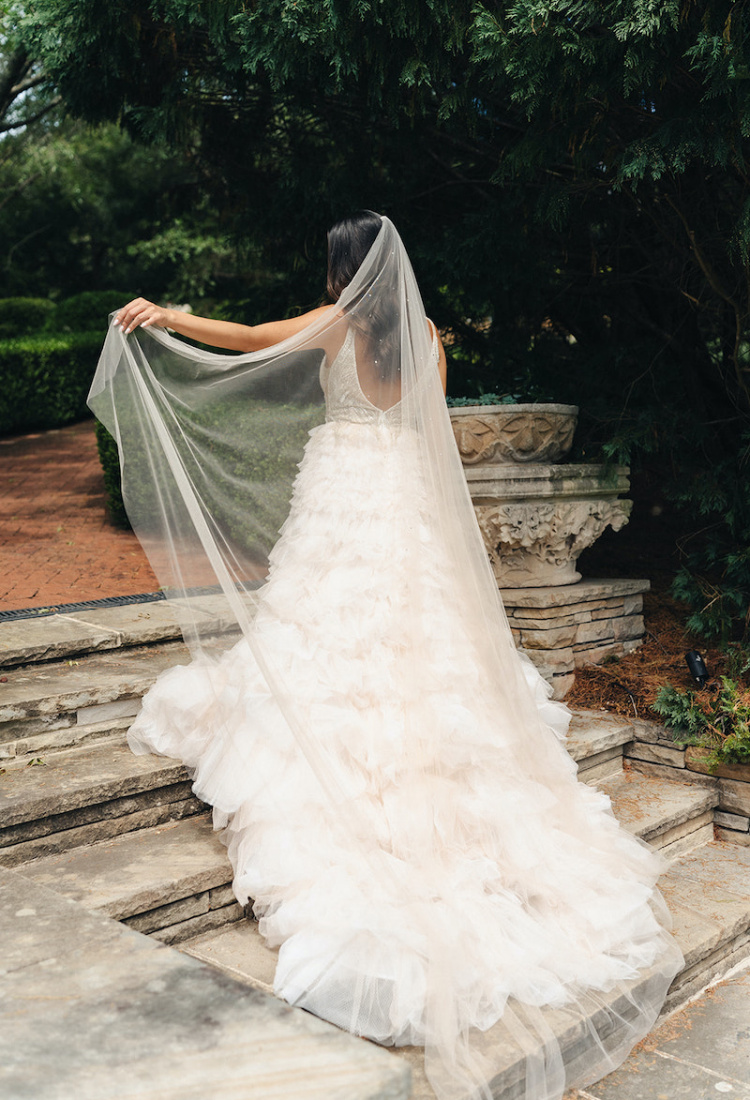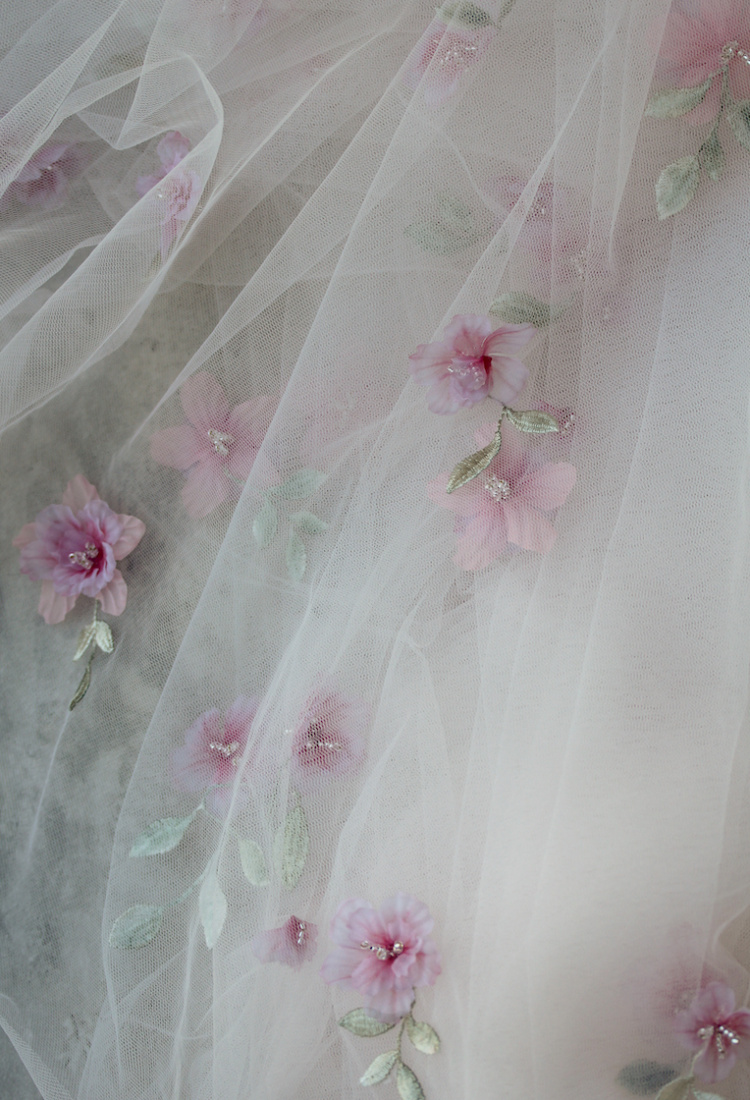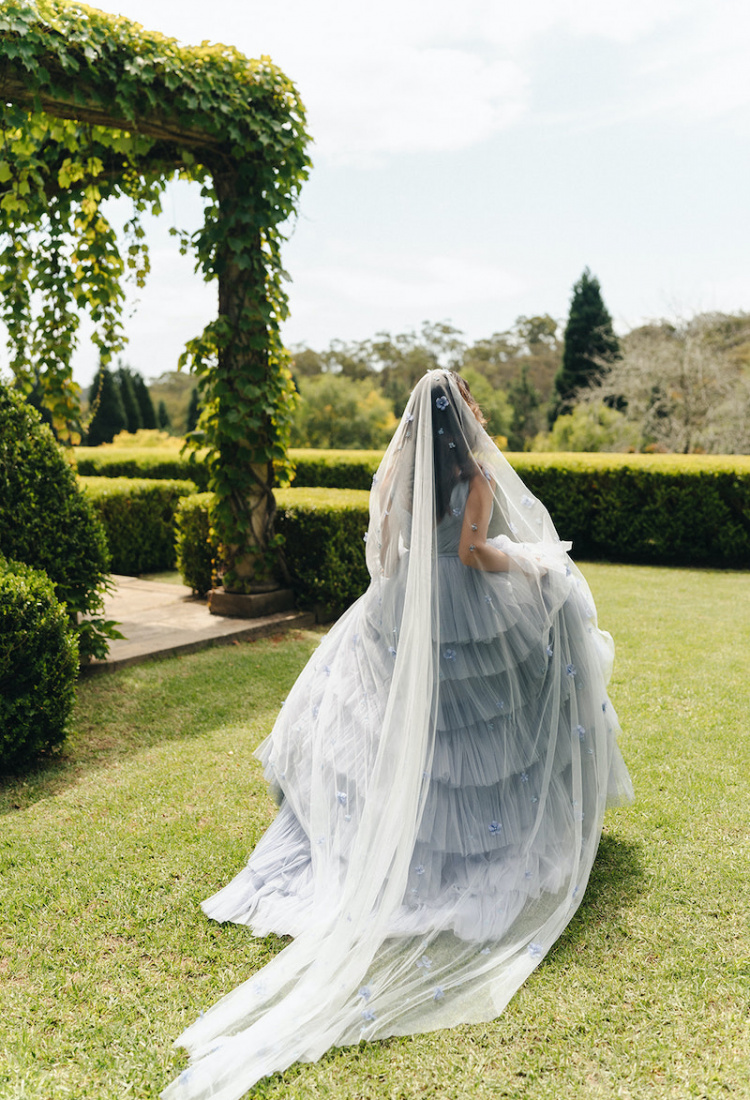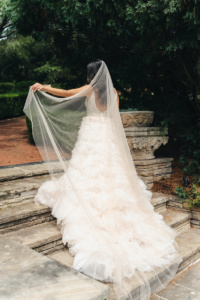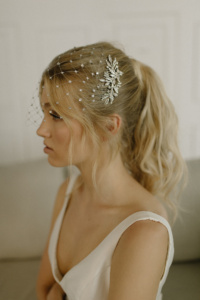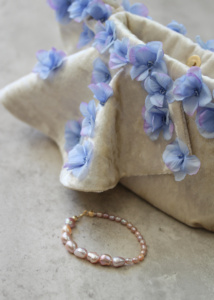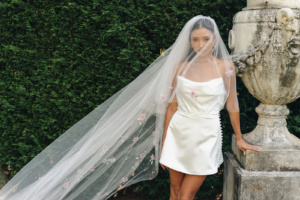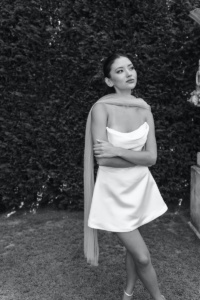Taking proper care of your wedding veil is essential to preserve its beauty and quality, for your wedding day and beyond.
From the moment you purchase or receive your wedding veil to the day you store it after the wedding, there are several important steps to follow to ensure your veil will remain pristine and beautiful for years to come. The abundance of material and delicate nature of a wedding veil is part of its beauty. However, this also means it requires extra special care when steaming, storing, transporting and cleaning them before and after your wedding day.
In this post, we’ll provide a comprehensive guide on how to care for your wedding veil and to keep it in perfect condition for your wedding day and beyond.
1. How to handle a wedding veil
Wedding veils are often made from delicate fine fabrics such as tulle, lace, organza and silk fabrics. These materials require extra gentle handling to avoid snags, tears and general damage.
If you have ordered your veil direct from us, it will arrive beautifully and safely packaged in a gift box for you to unravel. Always handle your veil with clean, dry hands to prevent transferring oils, dirt, lotions or makeup on to the fabric and embellishments.
Be mindful of sharp objects near your veil such as jewellery, zippers, rough fingernails or other objects that could catch and damage the veil’s delicate material.
2. How to store a wedding veil before the wedding
Once you have unboxed your veil, we recommend you hang it up straight away on the clip provided with your veil. This will help avoid creases and wrinkles.
Store your veil in a cool, dry place away from direct sunlight. This could be the corner of a spare room or in your wardrobe. Avoid storing your veil in plastic bags or boxes as they can trap moisture and cause mildew or fabric deterioration.
You can also hang a veil in a garment bag to protect it from dust, but we recommend that the garment bag is made from breathable fabric and is long enough to accommodate a longer veil.
If your veil is made from lace or features intricate beading, consider storing your veil in a flat box, cushioned with acid-free tissue paper to prevent the fabric and embellishments from becoming misshapen or damaged.
Remember to keep the box your veil came in and to store it wrapped in acid-free tissue paper, as you can use this to transport your veil and store it in after your wedding date.
Keep your veil in a safe place away from animals and loose fur. If your veil is extra long, ensure the train is safely tucked away so it doesn’t get stepped on or caught under wardrobe doors.
3. How to remove creases from a wedding veil
The best way to handle creases on a veil is to prevent them. When folding your veil, try to fold your veil lightly and avoid excessive pressure to prevent heavy creasing.
To remove creases, steam is your best friend. With steam, gravity and a bit of time, the creases will drop out. Hang up your veil and gently apply steam to it using a garment steamer or hang it in the bathroom during a hot shower.
If you don’t have access to a garment steamer, your wedding dress alterations professional or local dry cleaner may have be able to steam your veil for you.
Once steamed your veil will feel a little damp so it’s best to keep the veil on its hanger to allow your veil to dry and to minimise future creases before your wedding day.
We do not recommend ironing your veil as incorrect temperatures may melt and discolour your veil.
4. How to transport a wedding veil
Whether it’s a dress fitting, a hair trial or a trip to a destination wedding location, at some stage you may need to safely transport your veil. We recommend that you refold your veil and place it back in its box.
To refold your veil, follow these steps.
- First, find a flat surface like a dining table or a hallway
- Lay the veil on tissue paper lengthwise. The paper will support the netting between folds and it’s important to use white, acid-free tissue paper as this won’t damage or discolour the tulle over time
- Smooth out the veil
- Fold in the veil crosswise
- Tape to secure
- Gently fold the veil to fit in the box
5. How to wear and remove your wedding veil
Your veil is a key part of your bridal look so wearing and removing it with care is crucial. We recommend you work with your hairstylist to ensure your veil is securely fastened. Depending on the veil style, they may use bobby pins or clips to ensure it feels comfortable and secure.
Removing the veil with careful is also important. Practice removing it before the wedding day. Have a trusted friend or family member assist you in removing the veil after the ceremony. Gently unfasten it and remove any pins or clips, taking care not to pull or tug on the fabric.
6. How to care for an embellished veil
The embellishments applied to our wedding veils are applied by hand. If cared for properly, your veil will last for many years to come. For veils featuring 3D florals, we highly recommend ensuring you do not place heavy objects or firmly fold up the veil as this can crush the florals and distort its appearance.
If you need to spot clean around an embellishment, avoid rough handling near an embellishment as vigorous rubbing can damage or lift embellishments.
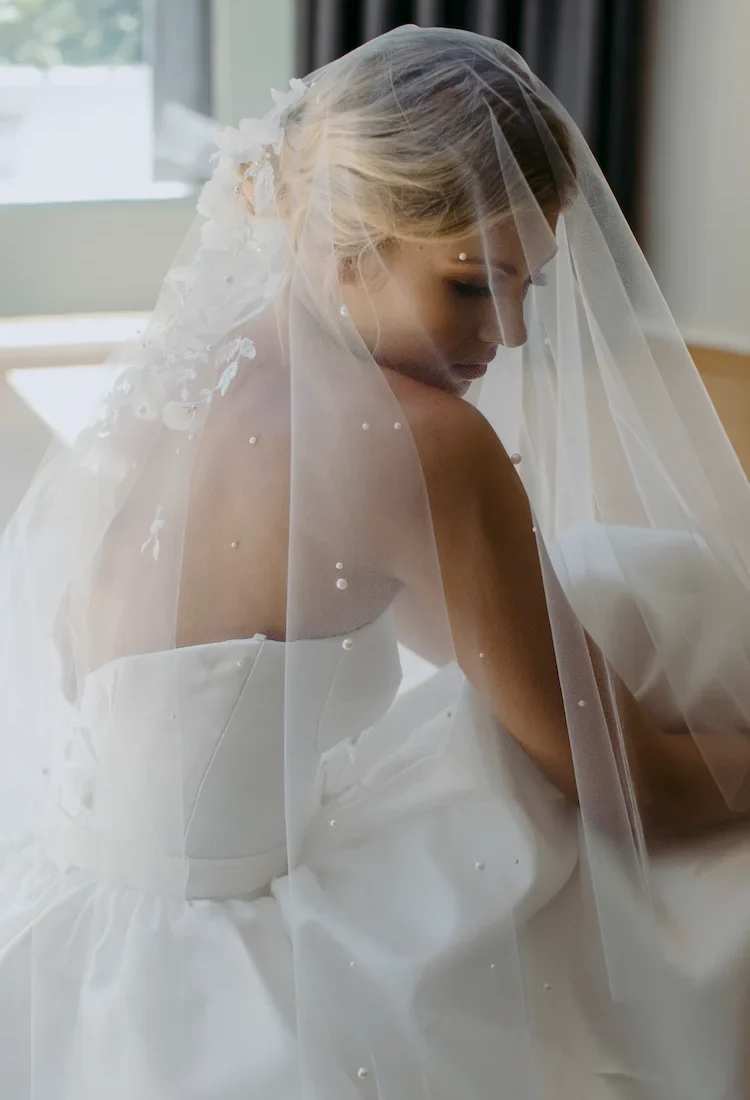
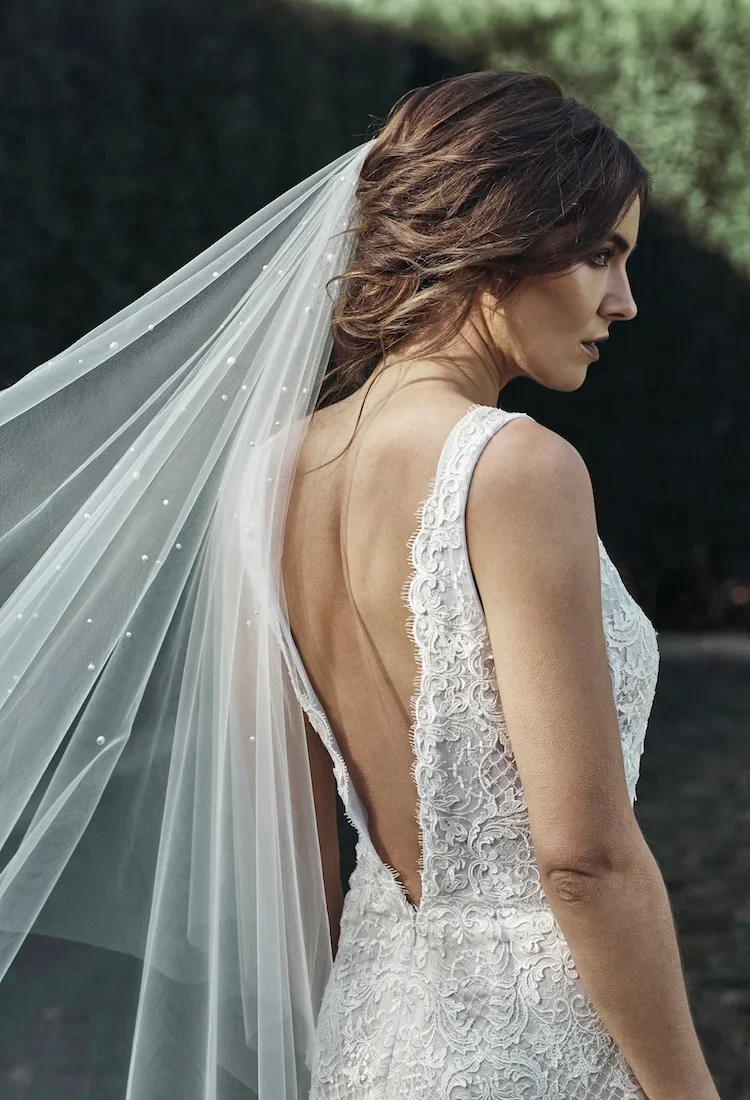
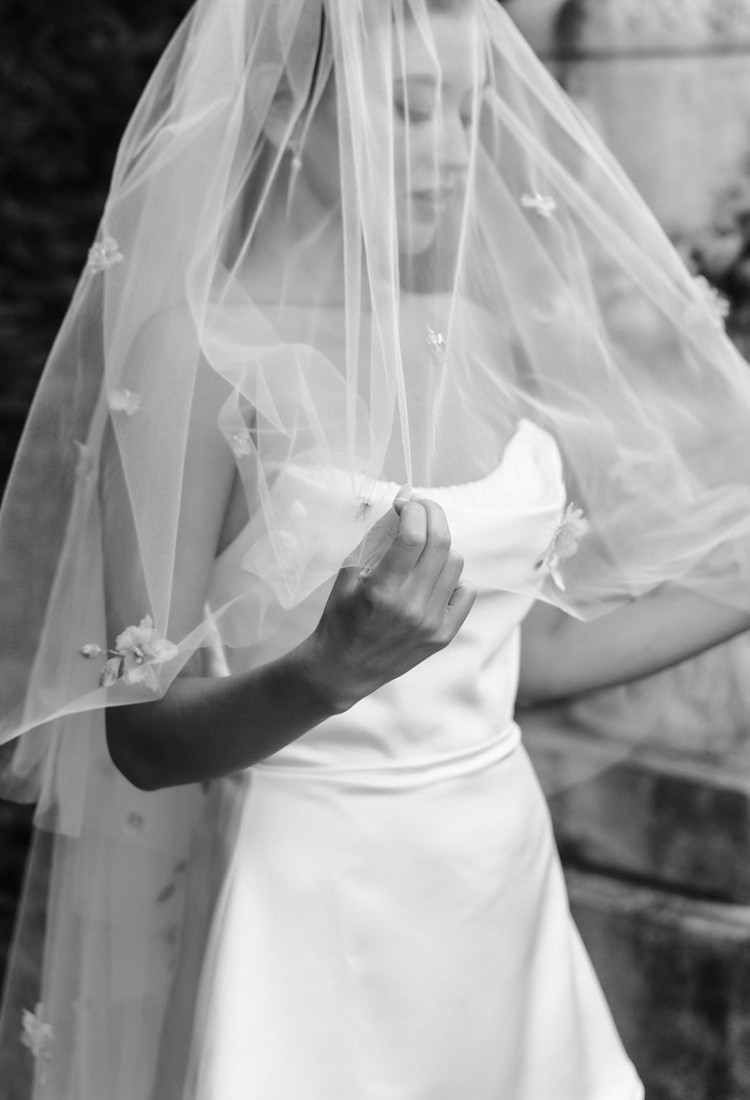
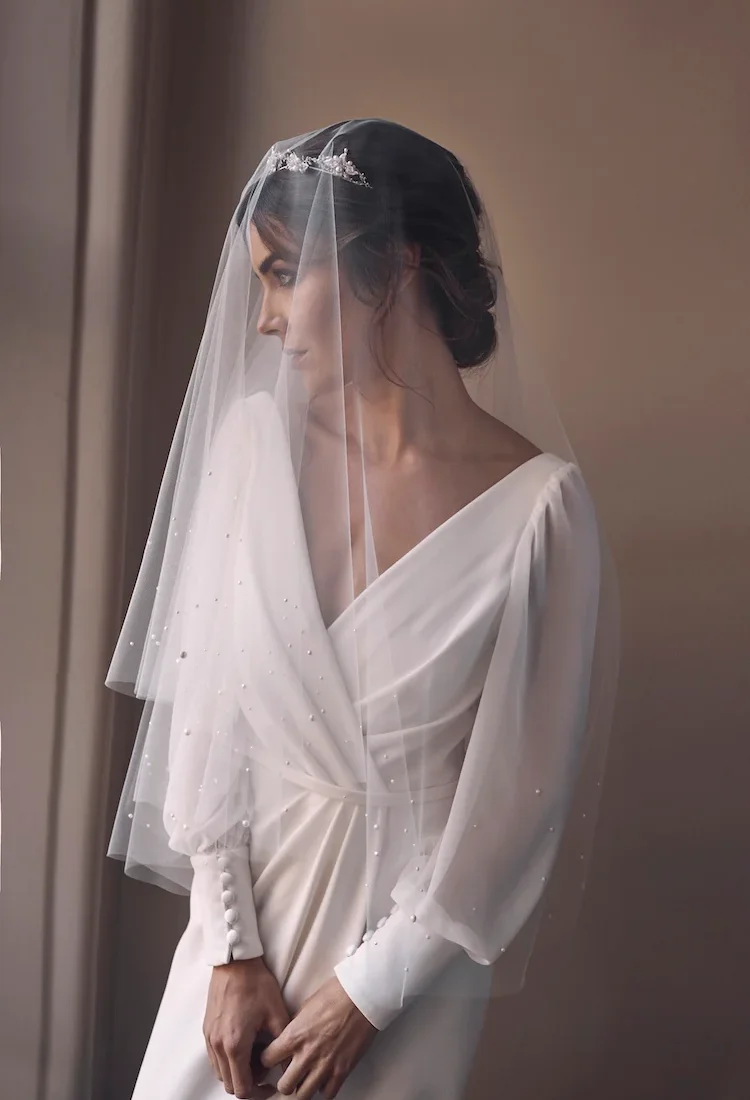
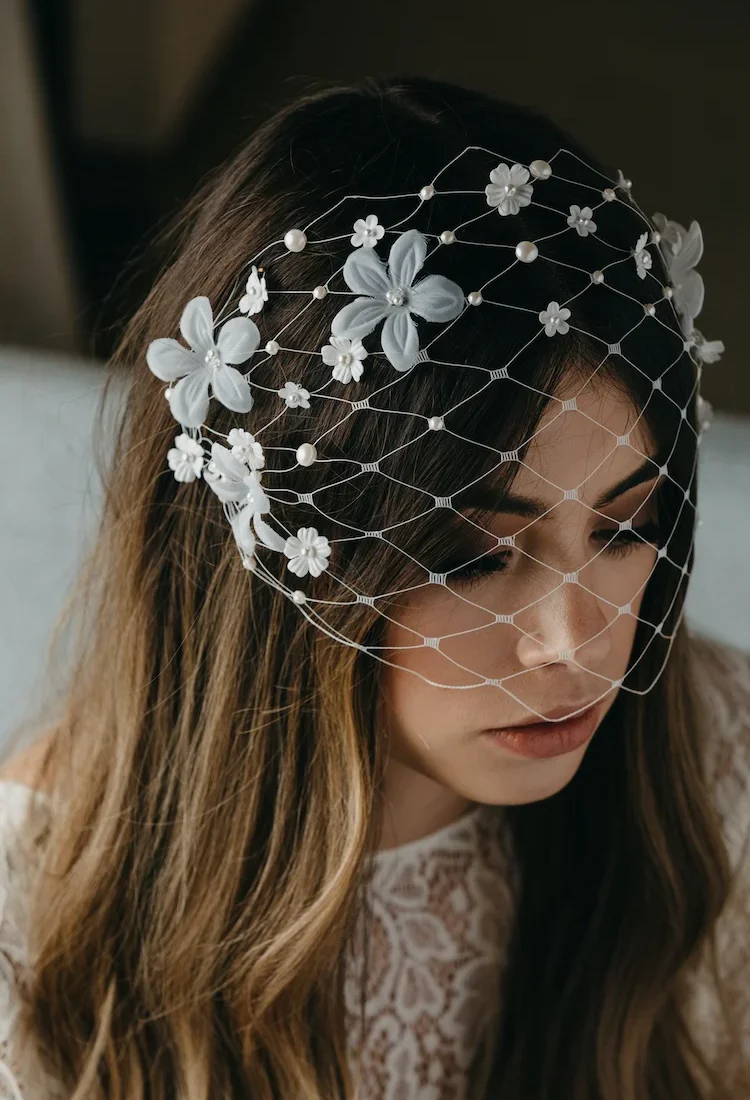
7. Can you wash a wedding veil?
As tempting as it might be to throw your wedding veil into a washing machine, please avoid the temptation! If your veil is marked, avoid the washing machine and avoid the temptation to soak it in water. Your veil can be spot cleaned with a damp cloth or baby wipes with dabbing movements.
Always be mindful to handle your veil with clean hands and be conscious of contact with your makeup. To remove pet hair or lint, we recommend using sticky tape or a lint roller.
8. Managing different types of veil fabrics
Wedding veils are made from a range of delicate fabrics and nettings. They are commonly made from synthetic materials such as nylon or polyester and can also be made from natural fibres including silk. Vintage veils were often made from cotton and silk fibres so are prone to discolouration and deterioration overtime due to sunlight, insects/bugs and heat.
It is important to consider the fibres of your veil when thinking about how to best care for it. A veil made from nylon is more durable than silk however it is less resistant to heat so can melt under high temperatures. A silk veil is best stored folded as over time gravity will impact the fibres/weave and will distort its shape.
The Victoria and Albert Museum in the UK have a helpful guide on caring for and restoring vintage wedding dresses and veils: https://www.vam.ac.uk/articles/caring-for-vintage-wedding-dresses-veils
With proper love and care, your wedding veil will become a beautiful heirloom for you to pass on to your daughters, sisters or dear friend.
Need personalised styling advice?
We are here to guide you through the exciting journey of accessorising your wedding dress and bridal looks.
We would love to work with you to bring together your vision. Email us photos of your wedding gown, bridal hairstyle and examples of styles you love from our collection. We can then get back to you with ideas and recommendations.
You may like
- 7 blush wedding headpieces you’ll love
- 3 steps to finding your perfect wedding veil
- How to secure a metal hair comb
- Everything you need to know about cathedral veils
- How to choose the best long wedding veil
- Wedding hair trials: 5 tips for perfect wedding hair
- How to style a dramatic wedding veil
- How to choose bridal earrings to match your neckline


